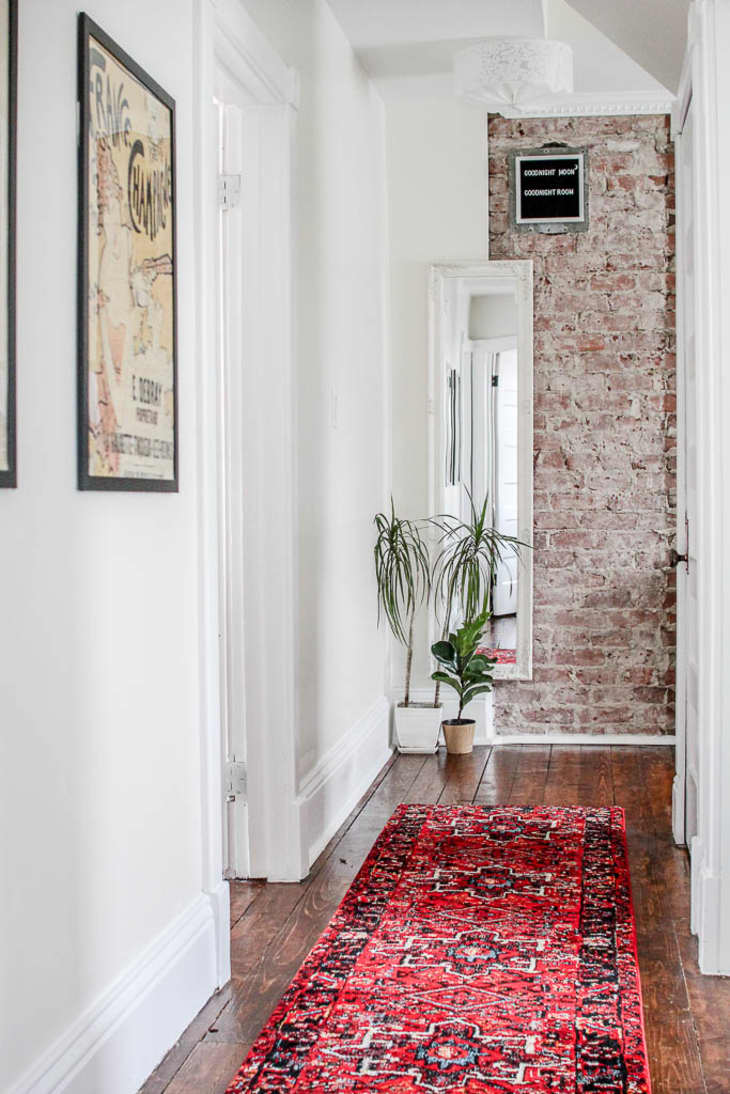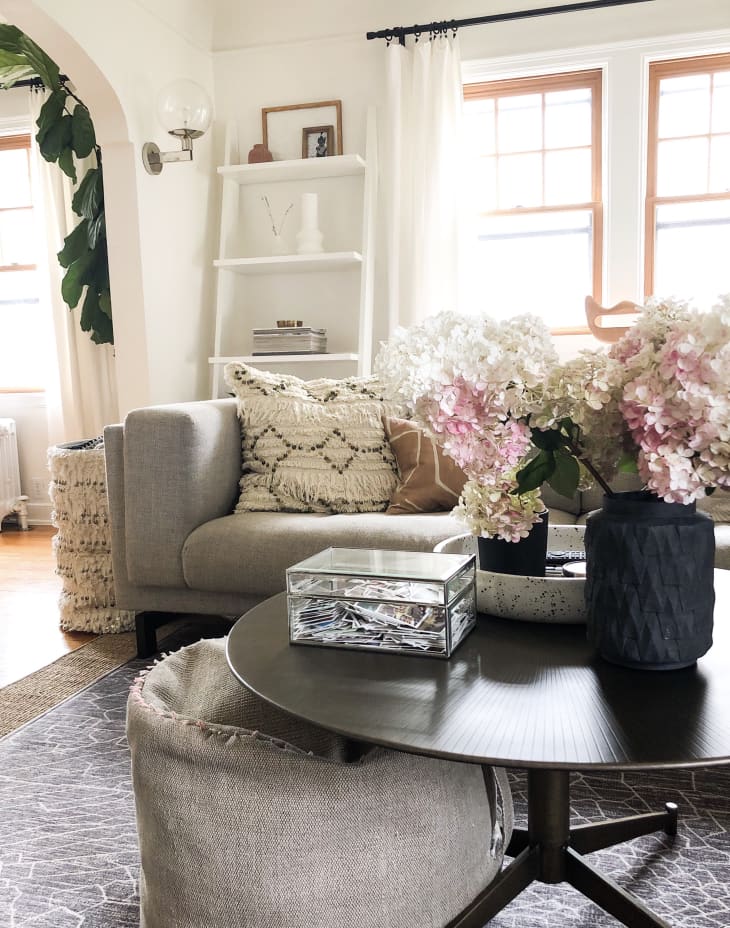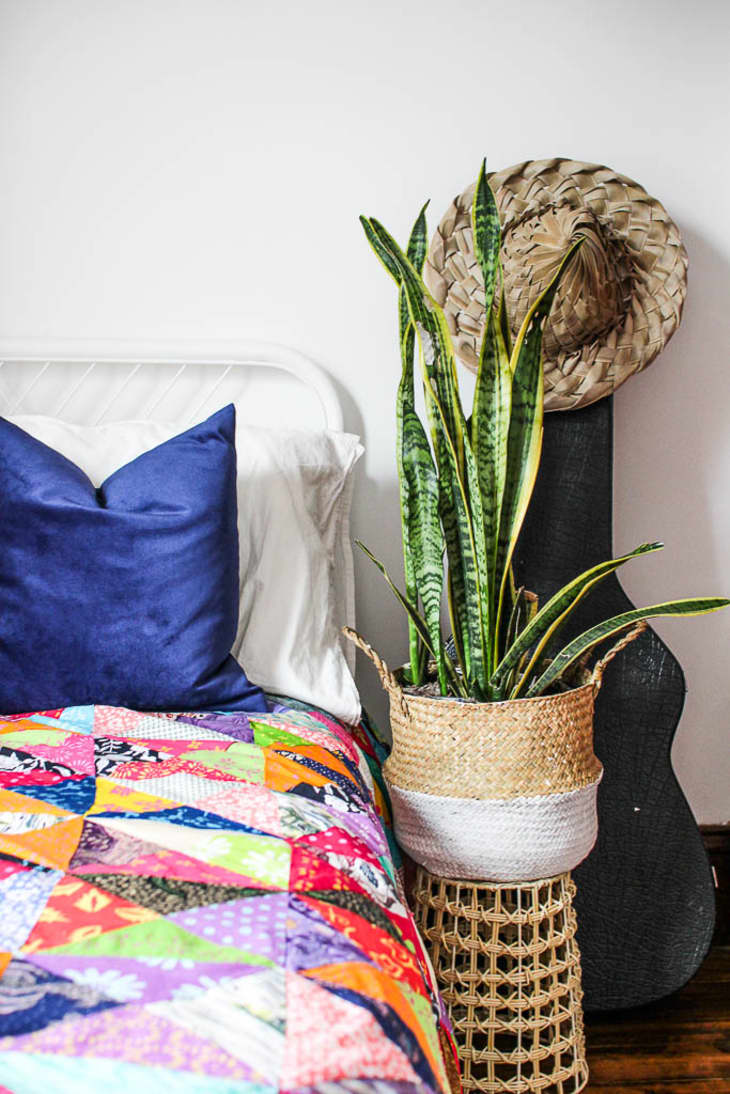As we move forward with our guest room/ office combination renovation, I’ve been decluttering to prepare. Life is so busy, so finding effective decluttering and deep cleaning methods can be a game-changer for me. It helps me have a plan of action.
In my research, I’ve found quite a few promising techniques to help me declutter, not just to prep before a renovation, but for regular cleaning as well. These methods not only help us organize our spaces but also contribute to a sense of tranquility and well-being.
In this post, I’ll share ten popular decluttering and deep cleaning methods that have gained widespread acclaim. I will also share photo inspiration of some lovely homes that are decluttered, but not cold or empty. From the Swedish Death Cleaning to the Ski Slope Method, let’s dive into these transformative techniques and examine both their benefits and drawbacks.
#1 Swedish Death Cleaning: Embrace Simplicity and Let Go
The Swedish Death Cleaning method, or “döstädning,” encourages individuals to declutter and downsize their possessions as they age. The idea behind this method is to minimize the burden on loved ones by thoughtfully organizing and eliminating clutter. By consciously choosing what to keep, donate, or discard, you can create a space that is filled with items that truly bring you joy and have sentimental value.
For example, in the photo below, this hallway has truly one-of-a-kind items, like a beautiful vintage rug, lighting, and vintage mirror instead of being overloaded with knickknacks.
Benefits: Swedish Death Cleaning encourages mindful decision-making and helps create a space filled with items that truly bring joy. It reduces the burden on loved ones and allows for a fresh start.
Drawbacks: However, this method may be emotionally challenging as it involves letting go of sentimental items. It can be difficult to part with belongings that hold memories, and the process may require a significant emotional investment.
#2 The Ski Slope Method: Tackle One Area at a Time
Inspired by the way skiers maneuver down a slope, the Ski Slope Method advises individuals to declutter their homes one area at a time. Start at the top of the metaphorical slope (e.g., the attic or storage room) and work your way down to the base (e.g., the living room or bedroom). This method helps you break down the decluttering process into manageable chunks, making it less overwhelming and more achievable.
I love how this living room is full of life without being cluttered. In fact, take a look at how they organize photos in a glass box on the coffee table. No kitschy photo albums!
Benefits: The Ski Slope Method breaks down the decluttering process into manageable chunks, reducing overwhelm and making the task more achievable. It provides a sense of progress and accomplishment as you move from one area to the next.
Drawbacks: The drawback of this method is that it may lead to a fragmented approach, with some areas being well-organized while others remain cluttered. It’s essential to ensure you complete the decluttering process in each area before moving on to the next.
#3 The 20/20 Rule: Prioritize Minimalism and Efficiency
The 20/20 rule centers around the concept of minimalism and efficient living. It suggests that if an item can be replaced within 20 minutes for under $20, there is no need to keep it. This rule encourages you to let go of items that are easily replaceable or no longer serve a purpose in your life. By embracing this mindset, you can free up valuable space and maintain a clutter-free environment.
In the photo below, the bedroom has a family heirloom quilt that can’t be replaced with the 20/20 rule, and what appears to be a valued guitar.
Benefits: The 20/20 Rule encourages minimalism and efficient living. It helps you let go of easily replaceable items and frees up valuable space. This method promotes a clutter-free environment and simplifies decision-making.
Drawbacks: However, strictly adhering to the 20/20 Rule may result in letting go of items that have sentimental value or unique meaning. It’s important to strike a balance between practicality and sentimentality when applying this method.
#4 Hushing the House: Finding Peace through Silence
Hushing the House is a method that promotes decluttering and creating a peaceful living environment through the power of silence. By removing unnecessary noise, visual distractions, and excess belongings, you can transform your home into a sanctuary of tranquility. Embracing this method may involve minimizing decorations, organizing cables and wires, and creating designated spaces for relaxation and reflection.
One of my favorite ways to achieve this “hushed” vibe is through color coordinating books on a book shelf. If you have tons of books like we do, keeping them organized by color can help the shelf appear less busy. Take a look at this approach in the photo below.
Benefits: Hushing the House promotes a peaceful living environment by removing unnecessary noise and visual distractions. It creates a space of tranquility, allowing for relaxation and reflection.
Drawbacks: The potential drawback of this method is that it may require significant adjustments to your home environment. It might involve reducing decorations and rearranging furniture to achieve a minimalist aesthetic. Not everyone may be willing or able to make such changes.
#5 The KonMari Method: Spark Joy and Transform Your Space
Developed by Marie Kondo, the KonMari Method has gained immense popularity worldwide. Honestly, if you haven’t heard about this by now (especially since it has been exposed by the originator herself as impractical), you didn’t miss much.
It revolves around the principle of keeping only items that “spark joy” in your life. By decluttering and organizing your belongings by category (clothing, books, sentimental items, etc.), you can cultivate a space that is not only clutter-free but also filled with items that evoke happiness and positivity.
Benefits: The KonMari Method focuses on keeping items that spark joy, creating a space filled with positivity. It encourages thoughtful decision-making and a deeper connection with your belongings.
Drawbacks: One drawback is that the KonMari Method’s emphasis on joy may be subjective. Determining what truly sparks joy can be challenging for some, leading to hesitation and potential indecisiveness during the decluttering process.
#6 The Four-Box Method: Sort and Prioritize
The Four-Box Method simplifies the decluttering process by using four boxes labeled as “keep,” “donate,” “sell,” and “trash.” As you go through each area, you place every item into one of these boxes, making decisions about what to keep or let go of. This method allows for a systematic approach, ensuring that you carefully evaluate each item and prioritize what truly matters.
A wardrobe that stays as organized as the one below has to have an approach like the four-box method at play.
Benefits: The Four-Box Method provides a systematic approach to decluttering, ensuring items are carefully evaluated and categorized. It simplifies decision-making and allows for efficient organization.
Drawbacks: However, this method may result in decision fatigue as you navigate through numerous items. It’s important to maintain focus and avoid getting overwhelmed by the sorting and categorization process.
#7 The 90/90 Rule: Declutter with Confidence
The 90/90 Rule is a method that encourages individuals to declutter items they have not used in the past 90 days and do not expect to use in the next 90 days. By adopting this rule, you can confidently let go of items that are not essential to your daily life, creating a space that is free from unnecessary clutter. This method promotes a more intentional and purposeful approach to organizing your belongings.
If you have a lot of clothing you need to purge, this may be a great approach for you. I love how 4 jeans are enough for the home owner of the space pictured below. She keeps the jeans on hooks for easy access and as décor. It works!
Benefits: The 90/90 Rule promotes regular decluttering and prevents the accumulation of unused items. It encourages a more intentional and purposeful approach to maintaining a clutter-free environment.
Drawbacks: The potential drawback is that this method might lead to regret if you let go of items that you later find a need for. It requires careful consideration to ensure you don’t discard something valuable or sentimental that you may require in the future.
#8 The Reverse Hanger Method: Identify Unused Clothing
If your closet is overflowing with clothes you rarely wear, the Reverse Hanger Method can help. Start by hanging all your clothes with the hangers facing the opposite direction. As you wear and wash each item, return it to the closet with the hanger facing the usual direction. After a few months, you’ll easily identify the clothes you haven’t worn based on the direction of their hangers. This method enables you to declutter your wardrobe by letting go of items that no longer align with your style or lifestyle.
The homeowner of the space pictured below doesn’t mention this decluttering method in their home tour, but I love that they keep seasonal capsule wardrobes within reach on this handy clothing rack.
Benefits: The Reverse Hanger Method helps identify clothing items that are rarely worn and encourages decluttering your wardrobe. It promotes a more intentional approach to clothing choices and streamlines your closet.
Drawbacks: One drawback is that this method may not account for seasonal or occasional use items. It might be challenging to determine if an item is truly unused if it serves a specific purpose during certain times or events. Consider the versatility and unique value of each item before deciding to part with it.
#9 The Digital Declutter: Organize Your Virtual Space
In our increasingly digital world, it’s crucial not to overlook the clutter that accumulates in our virtual spaces. The Digital Declutter method involves organizing and streamlining your digital files, emails, and apps. Delete unnecessary files, create folders to categorize documents, unsubscribe from unwanted newsletters, and declutter your desktop. By decluttering your digital space, you’ll enhance productivity, reduce stress, and find what you need more efficiently.
Benefits: The Digital Declutter method allows for a more organized and efficient virtual space. It reduces digital overwhelm, improves productivity, and helps you find what you need with ease.
Drawbacks: However, decluttering your digital space requires time and effort. It can be challenging to sift through old files, emails, and apps, and deciding what to keep or delete may become a daunting task. It’s important to allocate dedicated time and prioritize this aspect of decluttering.
#10 The One-In-One-Out Rule: Maintain a Balanced Environment
To prevent clutter from gradually accumulating, adopt the One-In-One-Out Rule. Whenever you bring a new item into your home, commit to removing one existing item. This method encourages mindful consumption and helps you maintain a balanced and clutter-free environment. Whether it’s a new book, clothing item, or kitchen gadget, this rule ensures that you make deliberate choices about what enters your space.
Benefits: The One-In-One-Out Rule promotes mindful consumption and prevents clutter from accumulating. It helps maintain a balanced and clutter-free environment while encouraging conscious decision-making about new purchases.
Drawbacks: The potential drawback of this method is that it may restrict your ability to acquire new items that you genuinely need or desire. It requires careful consideration of whether the new item truly outweighs the value of something you already have. It’s essential to strike a balance between decluttering and allowing yourself to enjoy new possessions responsibly.
Also, some critics claim that this approach doesn’t really help you “declutter” in a meaningful way, as you are still accumulating the same amount of stuff.
Remember that decluttering and deep cleaning are personal journeys, and it’s crucial to find methods that resonate with you and your lifestyle. Adapt these methods to suit your needs and preferences, making sure to strike a balance between efficiency, sentimentality, and joy.
Ultimately, the goal is to create a space that is organized, clutter-free, and reflects your personality and values. Embrace the transformative power of decluttering and deep cleaning methods, and enjoy the journey towards a more peaceful and harmonious living environment.
Happy decluttering and deep cleaning!








